FingerReader
A camera and haptic touch integrated ring scans and reads text aloud as you point
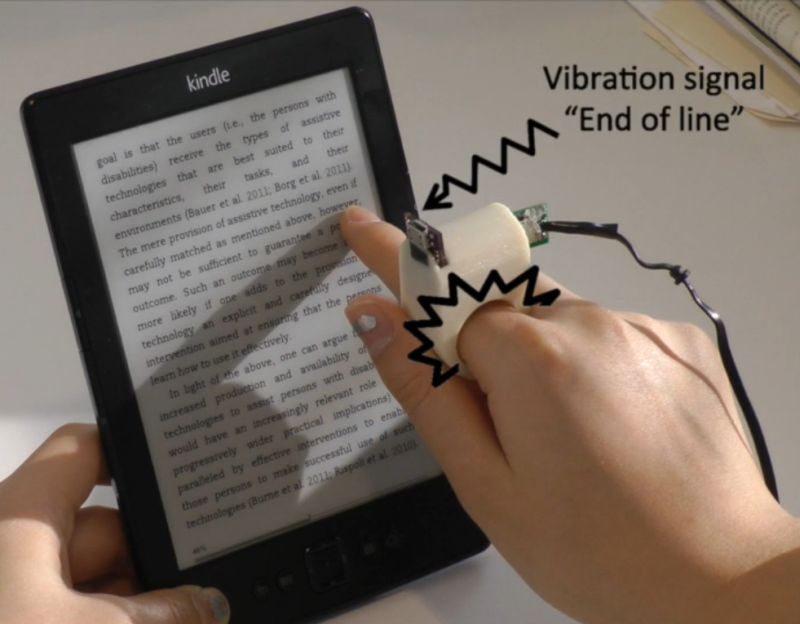
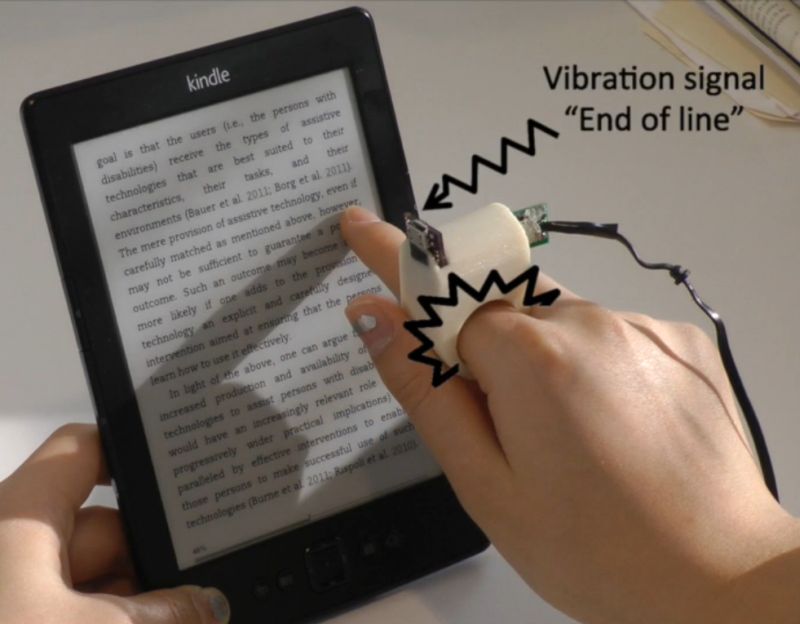
A ring built by MIT is able to quickly scan and read text, turning it into audio as your finger traces the page.
With the visually impaired and translation assistance in mind, FingerReader is designed to help read printed text.
As wearers scan individual lines with their finger, a camera working in tandem with internal algorithms detects words and reads them aloud. The device is able to tell when a user's finger strays and gently provides haptic feedback to physically nudge the hand back into place, keeping a straight scanning motion. Haptic cues are also provided according to layout, for example, at the start or end of a line.
MIT's Fluid Interfaces Group believes the interaction between humans and tech has not changed significantly since the PC was first invented, and sets the promotion of more natural and integrated experiences as its goal.
FingerReader brings text to the attention of other senses, and similarly Middlesex University unveiled a project, Into The Frame, that embraced haptic technologies. by letting gallery visitors 'feel' the textures of a painting, giving the device itself possible applications in neuro-rehabilitation.
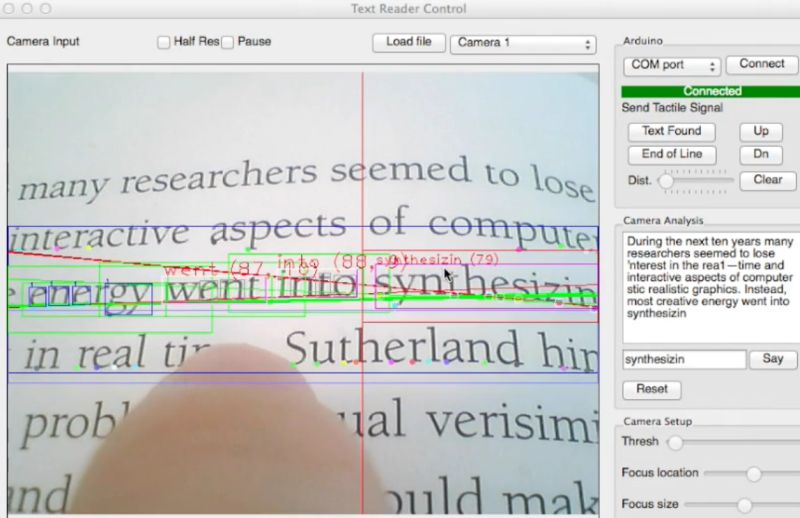
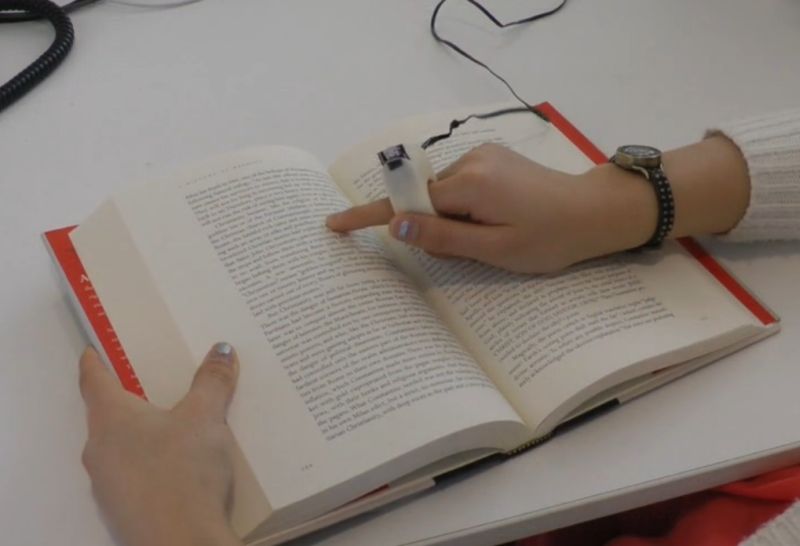
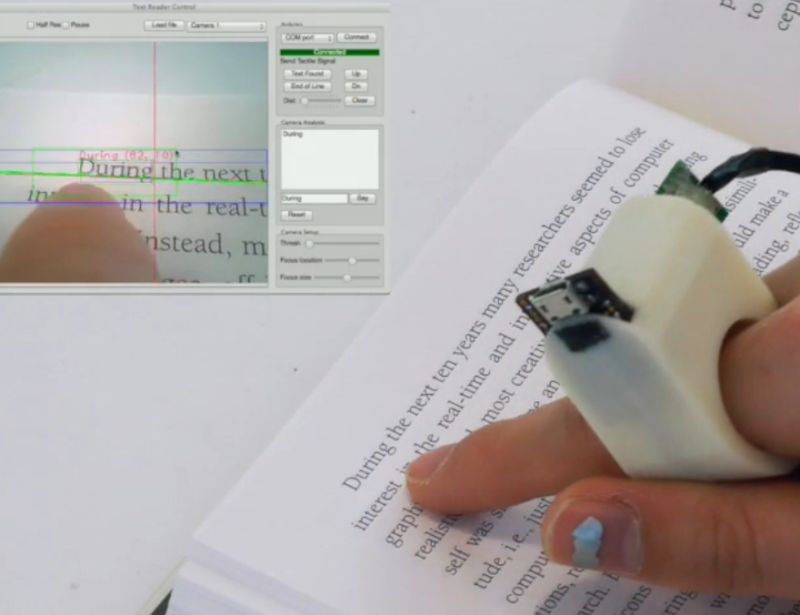
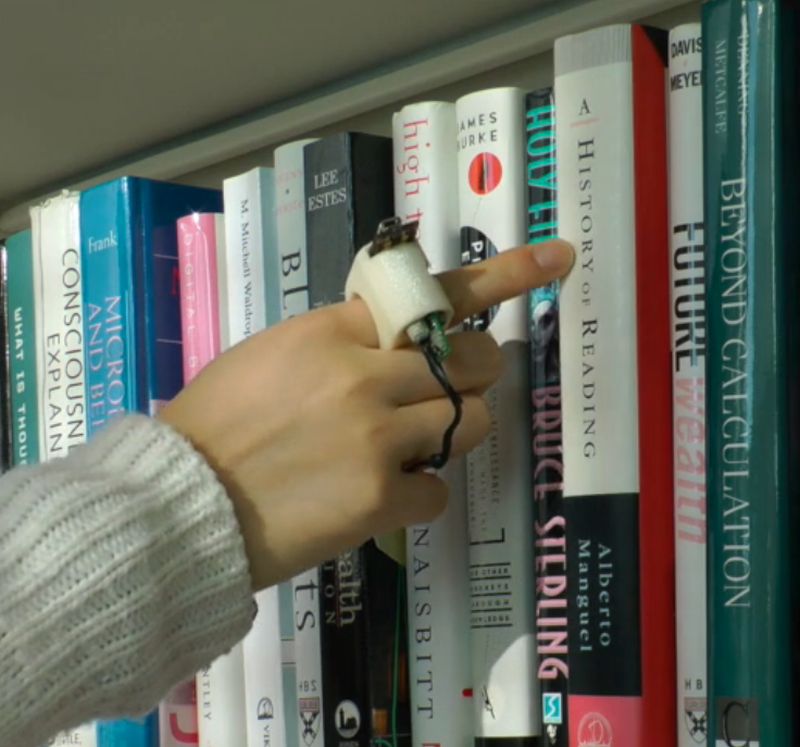



Discussion